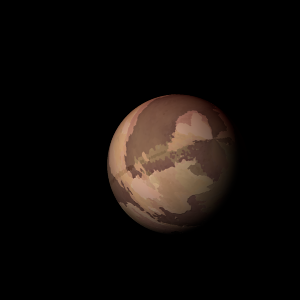|
|
Space Astro
|
Info for exoplanet "Naiaddus Gala"
| Scientific (actual) data |
|---|
| Name | K2-201 b |
| Planet status | Confirmed |
| Radius | 0.125 |
| Orbital period | 1.05979 |
| Inclination | 84.414 |
| Discovered | 2018 |
| Updated | 2021-02-05 |
| Tconj | 2457300 |
| Publication | Published in a refereed paper |
| Detection type | Primary Transit |
| Alternate names | 2MASS J19341458-2307518 b, EPIC 216008129 b, EPIC 216008129.01, TYC 6889-1358-1 b, WISE J193414.56-230752.3 b |
| Star name | K2-201 |
| Right ascension | 293.56° |
| Declination | -23.13° |
| Mag j | 10.653 |
| Mag h | 10.273 |
| Star distance | 199.05 |
| Star metallicity | 0.13 |
| Star mass | 0.96 |
| Star radius | 0.88 |
| Star temperature | 5507 |
| Star alternate names | 2MASS J19341458-2307518, EPIC 216008129, TYC 6889-1358-1, WISE J193414.56-230752.3 |
| Wikipedia article | K2-201 b |
Back
| |
| Fictional info (?) |
|---|
| Suggested name | Naiaddus Gala |
| Planet type | Cold planet |
| problematic voyage.
Its north and south poles, therefore, lie where most other planets have their equators. |
| Atmosphere | Hydrogen | 47% |
| Carbon monoxide | 46% |
| Helium | 7.1% |
| Hydrogen chloride | 0.15% |
| Atmospheric pressure | 0.6 bar |
 |
| Moon | Lianix Ne | Huge irregular oceanic asteroid |
| Gelsete Orlypban | Large round rocky planetoid |
| Mamar | Medium-sized round ice moon |
| Google search for Naiaddus gala |
|
Website by Joachim Michaelis
|
|
|
|